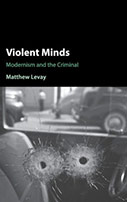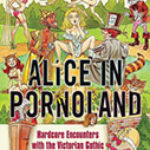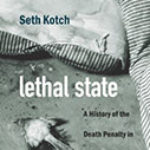Violent Minds: Modernism And The Criminal

Author: Matthew Levay
Publisher: Cambridge, UK; New York: Cambridge University Press, 2019. 248p.
Reviewer: Lars Ole Sauerberg │ July 2020
The coming into being of such generic fiction genres as crime fiction and science fiction, and their mass-market distribution, coincided epochally with modernism. But literary historians have tended to keep modernism and generic fiction in two quite distinct and unrelated categories. The fast market growth of generic fiction in the early twentieth century is usually explained as the appeal to a growing reading public of formulaic fiction that is easily and cheaply accessible.
Until quite recently literary historians have thought of modernism, like -isms before and after, in terms of epoch, in this case starting around the time of the First World War, peaking in the twenties, and running out of productive steam just before the onset of the Second World War, leaving traces on the literary epochs following, but no longer being of any innovative capacity. It is true that high modernists like T. S. Eliot and James Joyce incorporated popular literature in their work, but then for purposes of demonstrating the very opposition to whatever their personal writing projects were about.
Matthew Levay subscribes to an approach to modernism – New Modernist Studies – which sees the literary experimentation breaking with Victorian and Edwardian traditions as an ongoing making-it-new effort based on an appetite for questioning and problematizing the representation of subjectivity in literature, in practice in this study in narrative fiction.
At the same time, Levay refuses to take a view of generic fiction that isolates this phenomenon from whatever else is going on in literature. Indeed, Levay suggests that not only are modernism and generic fiction best seen together, but they may also throw considerable light on one another, and thus enhance our understanding of both. Central for this enhanced understanding is the intersecting point between modernism and generic fiction, notably in the representation of crime, the criminal, and the detective.
Canonical modernist writers like Wyndham Lewis, Henry James, Joseph Conrad, Gertrude Stein, and Graham Greene have all looked in the direction of crime for their themes, plots, and character drawings, whereas crime-fiction writers like Dorothy L. Sayers, Dashiell Hammett, and Patricia Highsmith have employed modernist tactics in their bids at crime fiction.
Though this double lens of watching literary representations of crime from the reactions against traditional ontology, epistemology, sociology, and psychology, which energized modernism, and of watching the new parameters through instantiation in highly formulaic literature, Levay proposes a view of literature that allows modernism to surface in popular literature and makes crime fiction, a literary kind often frowned upon if not downrightly despised, a literary practice both profiting from and contributing to the agendas of modernism, agendas which are still very much part of literary activities.
Literature offers a probe into the reality of crime and the criminal that allows for constructions in the form of imaginative interventions into what to the Victorian and Edwardian societies were the unknown areas of what makes up the criminal mind. The literature-mediated reality of crime at the time of early modernism were positivist models which linked criminal inclinations to hereditary traits readily recognizable as extraordinary features of the criminal’s body (Lombroso’s criminal anthropology).
The prototypes of modernist literary crime may be found in that pair, which in almost all literary histories of crime fiction are considered the pioneers, Edgar Allan Poe and Arthur Conan Doyle. But whereas the pair are often taken together as the originators of rationalistic crime detection, Levay points to the ways the American and British writers used their detectives to explore two different mindsets, when it comes to psychological representation. With Poe it is gamesmanship, and with Holmes it is calculated machinations, both of which, applied to criminal conundrums, constitute mental mobilizations in terms of order, ultimately of a mathematical-statistical kind, against a reality of a more opaque quality.
One of the problems facing Dupin and Holmes is a new view of reality as something more complex than allowed by rationalist thought. The reality that early modernism began to grapple with, no longer seemed to possess the neat order attributed to it by the Victorians. The effort of modernism to embrace a many-faceted world in congenial literary structures, or, perhaps better, disrupted or disrupting structures, required a readiness to, on the one hand, use modes of modernism to accommodate new mental constructions of crime and its contexts, and, on the other, to recognize that the erupting generic fiction, with crime fiction at the head, was in itself part of that modernism.
Levay suggests Dorothy L. Sayers and her sleuth, Lord Peter Wimsey, as the new meeting point between the two. Lord Peter performs his detection work, but in a post-World War-One world in which the old order has fallen, and he himself is home again from the front, shell-shocked and hardly in emotional or intellectual top form.
Sayers weds the rationalism of pre-war crime fiction to a much more inclusive sweep of existence, even having Lord Peter appear as a parody of himself and the type he is modelled from. If readers of Sayers may have felt at times that they encounter a fare different from what might be expected from one of the queens of the Golden Age of crime fiction, the answer is exactly in the author’s struggling with a some already petrified popular genre meeting a new kind of reality, both material and represented in the by then eager trade I modernist, experimental and inclusive literature.
Turning from murder-in-the-vicarage-related crime fiction, Levay next focuses on one of the crime complexes very much in contemporary media, terrorism by bombing.
The three authors singled out for applying modernist understandings of the criminal minds of terrorists are Henry James, Joseph Conrad, and G. K. Chesterton. Apart from a certain uncertainty when it came to which kinds of political activities their terrorists represented – anarchism, nihilism, etc. – both on the part of the authors and of their created characters, there is the literary difficulty of singling out the individual, and so making him particular and unique, from the mass, which dictates political ideologies meant to level out particulars in favour of generalities. In this way, Levay concludes, there is a tension between the kind of horrendous crime pursued by the terrorists and the aesthetic attractions of the individual characters.
Before the discussion of how Wyndham Lewis and Gertrude Stein approached crime fiction, Levay finds it necessary to introduce some deliberations on the literary phenomenon of middlebrow fiction. Since high modernist texts are often considered highbrow, and generic fiction like crime fiction lowbrow, it is logical to find out if there is space in the category of middlebrow for crime fiction with modernist traits or modernist text adopting generic-fiction features. Not surprisingly, there are no definite or exhaustive answers here, since middlebrow is notoriously hard to pin down. In the case of both Lewis and Stein trying to write “potboilers” for reasons of personal finances, there is indeed occasion for a discussion of diluted literary ideals. But it seemed downright impossible for both authors to do anything but pursue their form-challenging experiments.
The last crime-fiction writers to receive Levay’s attention are Dashiell Hammett, Graham Greene, and Patricia Highsmith. Arguably the best of the four main chapters, this particular chapter sheds a good deal of light on the pioneer author of hard-boiled crime fiction, the author of texts teeming with intellectual overtones, but which he nonetheless insisted on calling “entertainment,” and one of the all-time best authors of psychological crime fiction. The characters created by all three authors are all ones which it would be hard to imagine have come into being without the massive interest of modernism in the mind and its literary representations.
Few would doubt that the interest in the individual mind and its literary representations, which became a substantial aspect of modernism, also had considerable impact on generic fiction with its quickly expanding audience, first in print, and, later on, on the screen. The hard-boiled detective owes a lot of his mental dynamic to changing perceptions of the individual subject in equally changing contexts, finding a new and congenial channel of expression in a narrative-fiction discourse willing to negotiate alternative paths. However, to make a new departure in generic fiction such as the hardboiled whodunit dependent on the modernist paradigm shift, is probably to claim too much. At the onset of modernism, generic fiction was becoming a well-established cultural activity ion its own right, with its own circuits. The inspiration for such a new departure as the hardboiled whodunit, with its peculiar kind of protagonist, crime, and investigation, was as much a reflection of a changing reality as conveyed by the news media.
Dashiell Hammett indeed put his mark on subsequent generations of crime writers, who in turn oriented themselves according to new contexts. It is, for instance, possible to see the influence in the legal thriller as begun in earnest by Erle Stanley Gardner, in the police procedural, as given shape by Ed McBain, or in the wave of feminist-inspired fiction started by Sara Paretsky — even in the contemporary Scandinavian welfare-society crime fiction known as “Nordic Noir.”
By and large, crime fiction as arguably the most popular and most broadly disseminated kind of generic fiction is faithful to a kind and degree of realism familiar from Victorian and Edwardian fiction, un-disturbed by modernist formal experimentation although sharing with modernism a keen interest in the individual subject and its possible literary representations. But it is telling that the experimental crime fiction by such writers as Wyndham Lewis and Gertrude Stein were audience-failures. Also telling is that the entertainments by Graham Greene seem unique and un-repeatable. The titles by Henry James, Joseph Conrad, and, to some extent, G. K. Chesterton have long since entered the lists of canonical fiction and are hardly among the staple fare of contemporary crime-fiction devotees.
There is no way round the fact that the audience of crime fiction is deeply conservative, uninterested in literary experiment to try out new forms of representation, indeed very much against it. It is true that a tradition of modernist crime fiction may be identified, but the experimental and avantgarde nature of modernist fiction is hardly commensurable with the closure desire of the average crime-fiction reader.
Matthew Levay’s study is indeed stimulating, insightful, and challenging. But apart from the circumstance that generic literature also at times shows a strong interest in psychology and its literary representation, a mutual bind between crime fiction and modernism is perhaps to make a literary-epoch ethos arguably more important than literary-sociological issues for deciding the influence of ethos on the success of crime fiction at the time of the height of modernism.
Professor Lars Ole Sauerberg, Emeritus, University of Southern Denmark, Denmark


